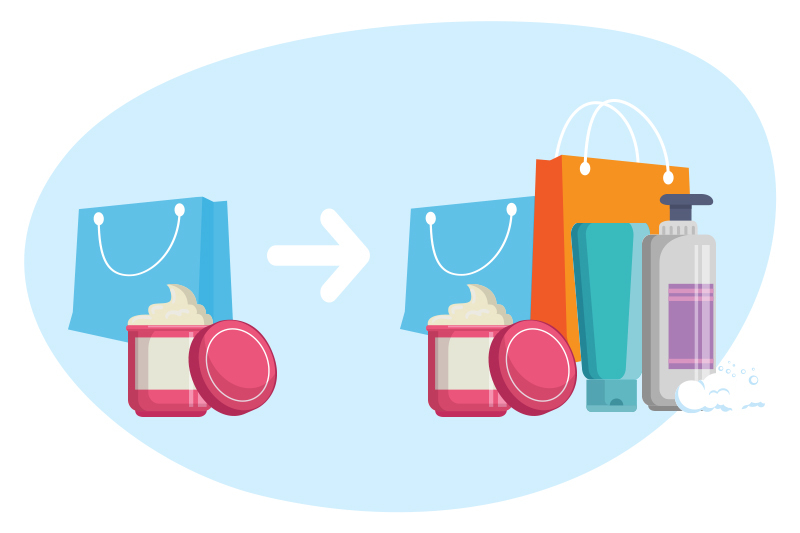
As competition grows tight, online merchants are strategizing the best ways to consistently boost sales — and it’s leading them to offer subscription services. In fact, U.S. consumers spent $15 billion each month in 2021 on retail subscriptions. Not only do subscriptions provide a predictable and continuous revenue stream, but they’re also ideal for collecting customer data.
Subscriptions are set-and-forget purchases, which means your customers will only need to enter their card information once to keep receiving their subscription periodically. Meanwhile, you’ll be bringing in regular cash flow through a relatively low-maintenance system.
Once you have a solid subscriber base, you can develop a deeper understanding of your customers and your most popular products. Using reporting and analytics tools will help you gain insight into which offers are performing best so you can work on developing a better product with a higher profit margin.
However, before the subscription revenue rolls in, you’ll need to take important steps to get started.

While the idea of generating recurring revenue is enticing, it may take a bit of time to brainstorm what you’d like to offer consumers.
First, consider what you can bring to the table — do you have a replenishable product with a low production cost that could be incorporated into a subscription model? If yes, set up a subscribe-and-save option with this product to see if consumers are interested. If not, think about other subscription types you could offer. Although physical products may first come to mind, other subscription offerings, like digital programs or sample boxes, can also bring in consistent revenue.
For example, if you’re selling candles, you might want to create a subscription offer that includes a box of small candles to sample each month. If you decide to go the digital route, you could offer customers discounts through a membership program or access to soothing music and nature sounds that pair with each candle scent in exchange for a small subscription fee.
The checkout page is the perfect place to offer add-ons such as a monthly insurance policy if you’re selling expensive gadgets or exclusive access to new products. Not only will a digital add-on put more recurring revenue in your pocket, but it also won’t require extra steps in the shipping and fulfillment process.

To run any type of ecommerce business, you’ll need merchant identification numbers, or MIDs, to direct transactions from the cardholder’s bank to your bank account. Typical merchants that only sell one-time purchases likely applied for MIDs specifically for processing one-time payments, but if you decide to start offering subscriptions, you’ll need to apply for new MIDs that are designated for recurring transactions.
While some merchants think they can do without this step, they’ll likely run into problems later down the road. Since subscription merchants typically experience more chargebacks than straight sale sellers, merchants who forgo the subscription MID process are more likely to be flagged for suspicious activity and risk their MID getting shut down.
To avoid these issues altogether, apply for a new MID with a payment processor that’s aware of your subscription offering. It may seem like another hoop to jump through, but it’s an important step that will ensure the health of your MIDs so you can keep bringing in subscription revenue.
When offering physical products in your subscription program, you’ll need to set up the shipping and fulfillment process to ensure that customers receive their products on time. Also, consider the manufacturing and sourcing costs to gauge the overall ROI for your new subscription offers.
When it comes to manufacturing, you can choose to either source your materials and manufacture the product yourself or pay a private manufacturer to allow your business to sell their product with your branding — this is called white labeling. While there are pros and cons for both options, manufacturing the product yourself will add time to your fulfillment process. If you decide to white label the product, you’ll need to work closely with the original manufacturer to ensure the product is made on time.

Additionally, today’s consumers usually expect free shipping and can be reluctant to buy a product or subscription if it includes a transit fee. To reel in more revenue, consider offering free shipping for subscription products or use free shipping as an incentive for customers to buy more products by only offering the free service once they reach a certain dollar amount.
However, even if you can rake in sales quickly, your success won’t last for long if you aren’t getting products to customers on time. To avoid angry customers, give consumers realistic delivery expectations. Not only do you need to allow time for the manufacturing process, but sourcing materials can take weeks or even months. The pandemic has slowed down production rates in virtually every industry, causing months-long delays and shortages.
Customers expect their products to arrive on the designated delivery date — failing to fulfill orders on time could hurt future sales.
Just like you need to switch to MIDs specifically for recurring billing, you’ll get the best results if you use a billing solution specifically designed for subscriptions. This can be done by either integrating a subscription application into your current ecommerce platform or switching to a recurring billing platform. If your product catalog is already set up, it’s relatively simple to integrate a subscription application into your existing platform.
Having the right set of tools to handle complex subscription needs will keep your subscription revenue rolling in while you can analyze the data to make even more money.

When choosing a recurring billing platform, keep in mind the importance of analytics for growing subscription revenue. A solid recurring billing platform will equip you with the data needed to make educated decisions to better understand your consumer base while tracking sales, chargebacks, churn and cost per acquisition. When equipped with the right data, it’s much easier to avoid common challenges related to recurring billing, such as outdated payment methods or fraudulent charges.
A major benefit of subscription programs is the consistent data they provide. Long-term, stable data allows you to make data-driven decisions on which offers to continue, who your target market is and a plethora of other helpful factors. At the end of the day, consistent data will fuel the growth of your subscription program.
